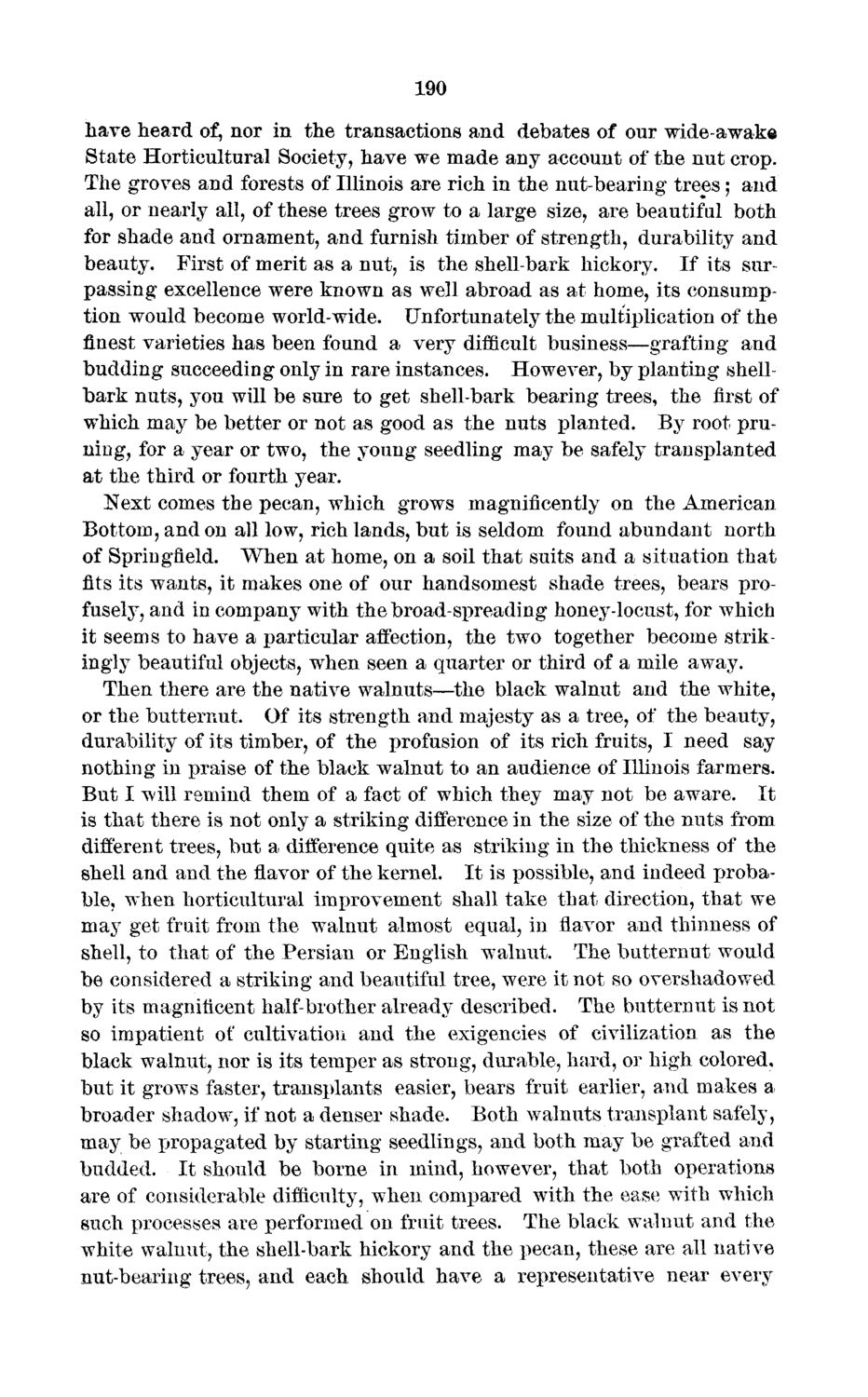| |
| |
Caption: Board of Trustees Minutes - 1873
This is a reduced-resolution page image for fast online browsing.

EXTRACTED TEXT FROM PAGE:
190 have heard of, nor in the transactions and debates of our wide-awake State Horticultural Society, have we made any account of the nut crop. The groves and forests of Illinois are rich in the nut-bearing trees; and all, or nearly all, of these trees grow to a large size, are beautiful both for shade and ornament, and furnish timber of strength, durability and beauty. First of merit as a nut, is the shell-bark hickory. If its surpassing excellence were known as well abroad as at home, its consumption would become world-wide. Unfortunately the multiplication of the finest varieties has been found a very difficult business—grafting and budding succeeding only in rare instances. However, by planting shellbark nuts, you will be sure to get shell-bark bearing trees, the first of wThich may be better or not as good as the nuts planted. By root pruning, for a year or two, the young seedling may be safely transplanted at the third or fourth year. Next comes the pecan, which grows magnificently on the American Bottom, and on all low, rich lands, but is seldom found abundant north of Springfield. When at home, on a soil that suits and a situation that fits its wants, it makes one of our handsomest shade trees, bears profusely, and in company with the broad-spreading honey-locust, for which it seems to have a particular affection, the two together become strikingly beautiful objects, when seen a quarter or third of a mile away. Then there are the native walnuts—the black walnut and the white, or the butternut. Of its strength and majesty as a tree, of the beauty, durability of its timber, of the profusion of its rich fruits, I need say nothing in praise of the black walnut to an audience of Illinois farmers. But I will remind them of a fact of which they may not be aware. It is that there is not only a striking difference in the size of the nuts from different trees, but a difference quite as striking in the thickness of the shell and and the flavor of the kernel. It is possible, and indeed probable, when horticultural improvement shall take that direction, that we may get fruit from the walnut almost equal, in flavor and thinness of shell, to that of the Persian or English walnut. The butternut would be considered a striking and beautiful tree, were it not so overshadowed by its magnificent half-brother already described. The butternut is not so impatient of cultivation and the exigencies of civilization as the black walnut, nor is its temper as strong, durable, hard, or high colored, but it grows faster, transplants easier, bears fruit earlier, and makes a broader shadow, if not a denser shade. Both walnuts transplant safely, may be propagated by starting seedlings, and both may be grafted and budded. It should be borne in mind, however, that both operations are of considerable difficulty, when compared with the ease with which such processes are performed on fruit trees. The black walnut and the white walnut, the shell-bark hickory and the pecan, these are all native nut-bearing trees, and each should have a representative near every
| |